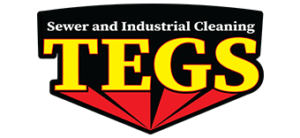High-pressure water pumps are powerful tools used in industrial cleaning. These pumps can reach pressures up to 3000 bar, making them ideal for tough cleaning jobs in various industries. Whether it’s removing stubborn grime, cleaning storage tanks, or maintaining equipment, high-pressure water pumps offer a versatile and effective solution.
These pumps work by pushing water at very high speeds, creating a jet that can cut through dirt, grease, and even rust. This makes them perfect for industries like power plants, refineries, and factories where cleanliness is crucial. The pressure can be adjusted depending on the job, allowing for precise control.
Using high-pressure water pumps improves efficiency and reduces the need for harsh chemicals. This is good for the environment and creates a safer working environment for employees. With the right techniques and safety measures, these pumps can ensure thorough cleaning and maintenance while keeping downtime to a minimum.
In this guide, we will explore the benefits of high-pressure water pumps, the various techniques used, essential safety tips, and how to choose the right pump for your needs. Understanding these aspects will help you make the most out of this powerful cleaning tool.
Benefits of High-Pressure Water Pumps in Industrial Cleaning
High-pressure water pumps offer several benefits in industrial cleaning. These pumps can produce water jets that are strong enough to remove stubborn dirt, grime, and even rust from surfaces. This makes cleaning faster and more thorough, ensuring that equipment and facilities are kept in top condition.
One significant advantage is the reduction in downtime for machinery and equipment. By using high-pressure water pumps, we can clean systems more quickly, allowing for quicker turnaround times and less interruption to production schedules. This efficiency helps keep maintenance costs down and increases overall productivity.
Another benefit of high-pressure water pumps is their eco-friendliness. These pumps use water instead of harsh chemicals, reducing environmental pollution. This makes them a greener choice for industrial cleaning. Additionally, the use of water poses fewer health risks to workers, creating a safer workplace.
Types of High-Pressure Water Pump Techniques
There are various techniques used with high-pressure water pumps to achieve the best cleaning results. Each technique serves a specific purpose and is suited for different types of industrial cleaning tasks.
1. Lancing: This technique involves using a long lance to direct high-pressure water streams at surfaces. It’s perfect for cleaning hard-to-reach areas and ensuring a thorough clean.
2. Manual Gunning/Hydroblasting: Here, operators manually control the water jet to clean large surfaces or specific areas. It’s versatile and can be used for a range of tasks from surface cleaning to rust removal.
3. Automatic Tank Wash Heads/3D Heads: These are specially designed for cleaning the insides of tanks and vessels. The 3D heads rotate to cover all angles, ensuring no spot is missed. This method is excellent for cleaning storage tanks and reactors.
4. Feeders: These are used to deliver a steady stream of high-pressure water into specific areas or machinery. Feeders help maintain a continuous cleaning process, making them ideal for large-scale operations.
By understanding these techniques, we can choose the best method for each cleaning task, ensuring efficiency and effectiveness. Using the right technique improves the quality of cleaning and prolongs the life of industrial equipment.
Essential Safety Tips for Operating High-Pressure Water Pumps
Safety is crucial when operating high-pressure water pumps. These powerful machines can be dangerous if not used correctly. To ensure everyone stays safe, we need to follow some essential safety tips.
First, always wear Personal Protective Equipment (PPE). This includes safety goggles, gloves, and sturdy boots. PPE protects us from water jets and flying debris. It’s also a good idea to wear ear protection because the pumps can be quite noisy.
Second, inspect all equipment before use. Check hoses, nozzles, and connections for any signs of wear or damage. A faulty component can lead to accidents. Regular maintenance and immediate repairs keep everything in good working order.
Third, never point the water jet at anyone. The high-pressure stream can cause serious injuries. Always be aware of your surroundings and keep a safe distance from others while operating the pump. Clear the area of unnecessary personnel and obstacles to avoid accidents.
How to Choose the Right High-Pressure Water Pump for Your Needs
Choosing the right high-pressure water pump depends on your specific needs. Here are some factors to consider:
1. Pressure and Flow Rate: Different tasks require different pressures and flow rates. Higher pressure (up to 3000 bar) is needed for tougher jobs like rust removal, while lower pressure can handle general cleaning.
2. Type of Job: Consider what you’ll be cleaning. For example, lancing is great for hard-to-reach areas, while a 3D tank wash head is ideal for inside tanks.
3. Mobility: Depending on the worksite, you might need a portable pump or a stationary one. Portable pumps offer flexibility, while stationary pumps are good for consistent, large-scale jobs.
4. Ease of Use: Look for pumps that are easy to operate and maintain. Simple controls and easily accessible parts make the job smoother and reduce downtime.
By considering these factors, you can choose the best pump for your tasks, ensuring efficiency and effectiveness.
Conclusion
High-pressure water pumps play a vital role in industrial cleaning. They offer numerous benefits, from improving cleaning efficiency to being environmentally friendly. Understanding different techniques like lancing and hydroblasting helps us choose the right method for each task. Safety is paramount, so always wear PPE, inspect equipment, and follow proper procedures. When selecting a pump, consider the pressure, type of job, and ease of use.
If you need expert help with industrial cleaning using high-pressure water pumps, reach out to TEGS Thailand. Our experienced team is ready to assist you in achieving optimal cleaning results, safely and efficiently. Contact our industrial cleaning specialist today to discuss your needs and find the perfect solution.





